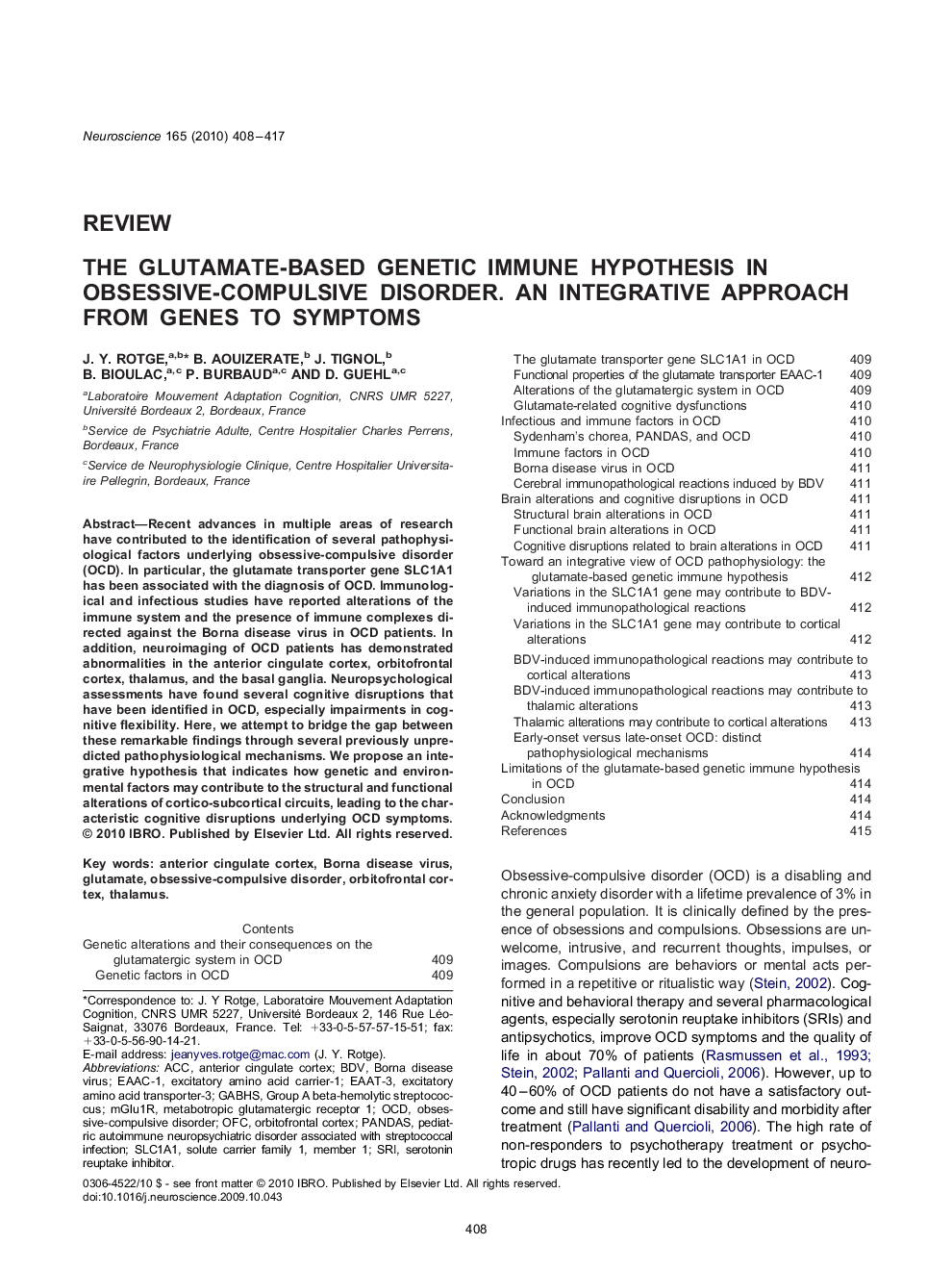| Article ID | Journal | Published Year | Pages | File Type |
|---|---|---|---|---|
| 4339695 | Neuroscience | 2010 | 10 Pages |
Recent advances in multiple areas of research have contributed to the identification of several pathophysiological factors underlying obsessive-compulsive disorder (OCD). In particular, the glutamate transporter gene SLC1A1 has been associated with the diagnosis of OCD. Immunological and infectious studies have reported alterations of the immune system and the presence of immune complexes directed against the Borna disease virus in OCD patients. In addition, neuroimaging of OCD patients has demonstrated abnormalities in the anterior cingulate cortex, orbitofrontal cortex, thalamus, and the basal ganglia. Neuropsychological assessments have found several cognitive disruptions that have been identified in OCD, especially impairments in cognitive flexibility. Here, we attempt to bridge the gap between these remarkable findings through several previously unpredicted pathophysiological mechanisms. We propose an integrative hypothesis that indicates how genetic and environmental factors may contribute to the structural and functional alterations of cortico-subcortical circuits, leading to the characteristic cognitive disruptions underlying OCD symptoms.
